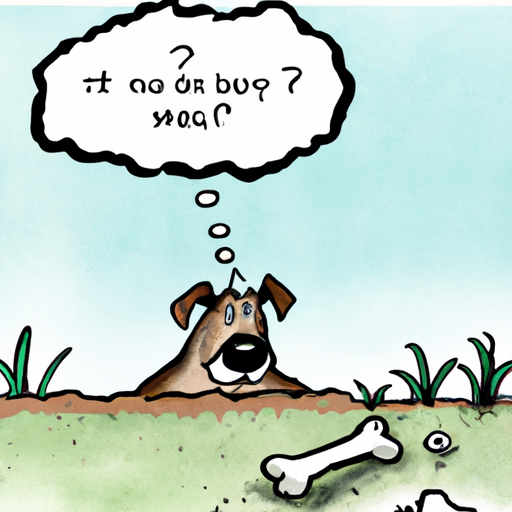Understanding Your Dog’s Behavior
You may have noticed your dog engaging in some peculiar behaviors from time to time. One of these behaviors is the act of burying or hiding bones. Yes, you’ve seen it right, your furry friend is storing away those precious treats for another time. But why do they do this? This behavior actually harks back to their ancestors, the wolves.
Wolves, being wild animals, had to hunt for their food and make sure that it lasted. If they had a particularly large hunt, they would eat their fill and then bury the leftovers. This would not only preserve the food but also mask the smell from other predators. Your pet dog doesn’t need to hunt for food, but the instinct to hide their food away for later still lingers.
The Instinct to Survive
You’ve probably noticed that your dog doesn’t hide every treat or bone you provide. So, what makes them decide when to hide it and when to gobble it up? Well, you’re not alone in asking this question. The simple answer is – it depends on how they perceive the value of the treat.
- High-value treats: These are the treats that your dog absolutely loves. They might decide to hide these to enjoy later when they can savor it without any distractions.
- Low-value treats: Your dog might eat these immediately as they don’t see it as worth saving for later.
Communication and Territory
Another reason why dogs may hide their bones is to establish their territory. By burying their bones in a specific area, they are communicating to other animals that this is their space. This is most common in multi-dog households. If you’ve more than one dog, you might notice them hiding their bones in different spots. This is their way of saying, “This is my stash, keep out!”
Anxiety and Stress
Sometimes, the act of hiding bones can be an indicator of anxiety or stress. If your dog is hiding bones more frequently, it might be worth checking for any changes in their environment that could be causing this. This could be anything from a new pet in the house to a change in your work schedule. As caregivers, it’s crucial to ensure our pets feel safe and secure in their environment.
How to Handle Your Dog’s Bone-Hiding Behavior
While it’s natural for dogs to hide their bones, here are a few things you can do to manage this behavior:
- Provide designated spots for them to hide their bones
- Limit the number of high-value treats if they are hiding them excessively
- Monitor their behavior for any signs of anxiety or stress
| Strategies | Purpose |
|---|---|
| Designated spots | Prevents your dog from hiding bones in undesirable locations |
| Limit high-value treats | Manage excessive bone-hiding |
| Monitor behavior | Detect signs of stress or anxiety |
Frequently Asked Questions
Q: Is it harmful for dogs to hide their bones?
A: No, it’s a natural behavior. However, excessive hiding can indicate stress or anxiety.
Q: Should I stop my dog from hiding bones?
A: Not necessarily. If it’s not causing any issues, it’s okay to let them continue. If it becomes a problem, consider the strategies mentioned above.
Q: What if my dog is hiding bones because of a new pet?
A: Try giving them their own space and monitor their behavior. If the issue persists, consider consulting a vet or a pet behaviorist.
Remember, understanding your dog’s behavior is key to ensuring their overall happiness and well-being. After all, a happy dog makes a happy home!



